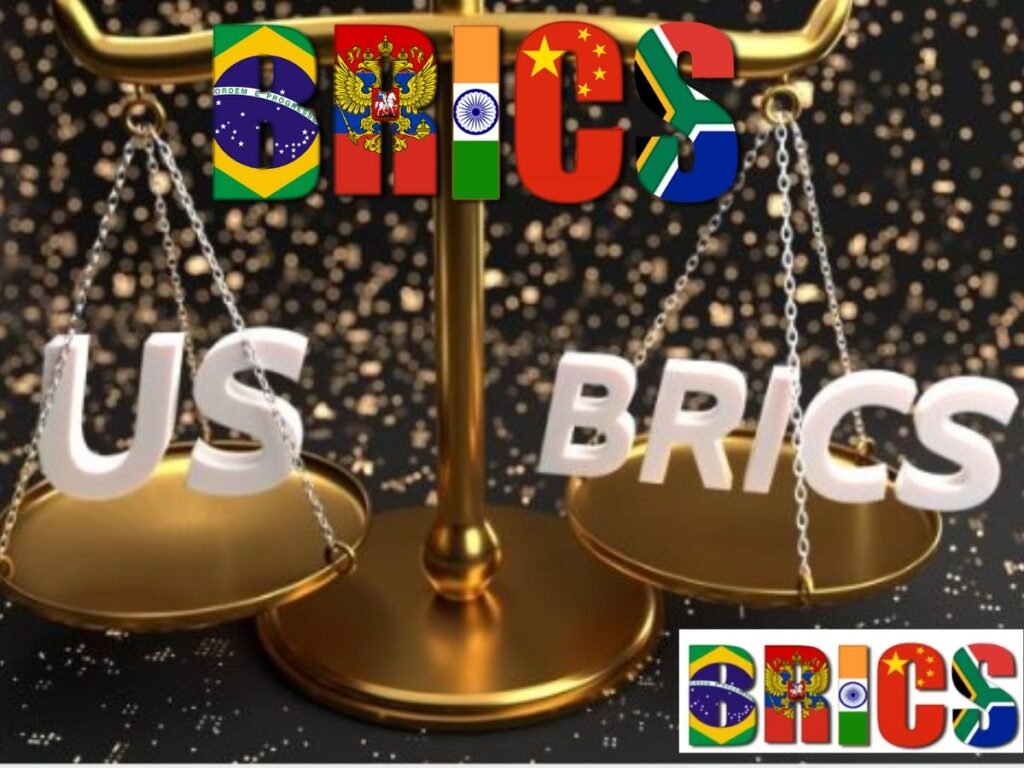What is BRICS’ Currency?
The BRICS currency is a proposed unified medium of exchange for the member countries, facilitating smoother and more efficient trade. This currency would be backed by a basket of commodities and the combined economic strength of the member nations, providing a stable and reliable alternative to the dollar.
In recent years, the global economic landscape has witnessed significant shifts. Among these changes is the emergence of the BRICS nations—Brazil, Russia, India, China, and South Africa—as major players in the international arena. One of the most talked-about developments is the potential introduction of a BRICS currency, which aims to challenge the dominance of the US dollar.
What Countries Are Dropping the US Dollar?
Several countries have been exploring alternatives to the US dollar for international trade and reserves. The BRICS nations are leading this movement, driven by a desire to reduce their dependence on the dollar, mitigate the impact of US sanctions, and promote economic stability. By trading in their local currencies and establishing bilateral agreements, these countries aim to create a more balanced global financial system.
What is the Purpose of BRICS?
BRICS aims to promote peace, security, and development among its member countries. By fostering cooperation in economics, finance, and technology, BRICS seeks to create a platform for mutual growth and stability. The establishment of a BRICS currency aligns with these goals by reducing reliance on the US dollar and encouraging intra-BRICS trade and investment.
Who Finances BRICS?
BRICS is primarily financed by contributions from its member countries. The New Development Bank (NDB), established by BRICS in 2014, plays a significant role in funding various projects within the member states. The NDB focuses on infrastructure and sustainable development projects, aiming to support economic growth and reduce poverty. Each member country contributes capital to the NDB, which in turn finances projects that benefit the entire BRICS community.
What is BRICS Currency Backed By?
A key consideration for the viability of a BRICS currency is its backing. Unlike fiat currencies, the BRICS currency is proposed to be backed by a basket of commodities such as gold, oil, and other natural resources. This commodity backing would provide intrinsic value to the currency, making it more stable and attractive to investors and traders.
Does BRICS Have a Future?
The future of BRICS appears promising, given the collective economic and demographic strengths of its member countries. BRICS nations account for a significant portion of the world’s population and GDP, giving them substantial influence in global affairs. Additionally, the growing trend of de-dollarization and the increasing importance of emerging markets suggest that BRICS will continue to play a vital role in the global economy.
Will BRICS Replace the Dollar: SWOT Analysis?
Strengths:
Economic Power: BRICS nations have large and rapidly growing economies.
Resource Richness: Abundant natural resources to back the currency.
Diverse Markets: Broad range of industries and sectors.
Weaknesses:
Political Differences: Varied political systems and agendas.
Economic Disparities: Significant economic gaps between member countries.
Infrastructure Challenges: Need for improved financial infrastructure.
Opportunities:
Increased Trade: Potential for enhanced intra-BRICS trade.
Global Influence: Greater role in shaping global economic policies.
Technological Advancements: Innovation in financial technologies.
Threats:
US Dollar Dominance: Entrenched position of the US dollar.
Geopolitical Tensions: Conflicts within and outside BRICS.
Economic Volatility: Susceptibility to global economic fluctuations.
Is BRICS GDP Bigger than G7?
As of recent data, the combined GDP of BRICS countries is still lower than that of the G7 nations. However, BRICS economies are growing at a faster rate, and projections suggest that they could surpass the G7 in the coming decades. The economic dynamism and demographic trends favoring BRICS point towards a significant shift in global economic power.
The Weakest and Strongest Country in BRICS?
Among the BRICS nations, China stands out as the strongest country in terms of economic power, technological advancement, and global influence. China’s massive economy, robust manufacturing sector, and innovative capabilities make it a dominant force within BRICS.
On the other hand, South Africa is often considered the weakest member due to its relatively smaller economy and higher levels of economic inequality and political instability. Despite these challenges, South Africa plays a crucial role in representing the African continent within BRICS and contributes valuable resources and perspectives.
What are the Negatives of BRICS?
While BRICS has many advantages, it also faces several challenges:
Internal Disparities: Economic and political differences between member countries can hinder cooperation.
Geopolitical Risks: Tensions within and between BRICS nations can impact stability and progress.
Dependence on Commodities: Reliance on commodity exports can make BRICS economies vulnerable to global price fluctuations.
Infrastructure Gaps: Need for improved infrastructure and financial systems to support integration.
Does Pakistan Want to Join BRICS?
Pakistan has expressed interest in joining BRICS, motivated by the potential economic benefits and increased geopolitical influence that membership could bring. Pakistan’s strategic location, large population, and growing economy make it a viable candidate for BRICS expansion. However, the decision to admit new members requires consensus among existing BRICS nations, and there are various geopolitical and economic considerations that will influence this process.
Conclusion
The idea of a BRICS currency presents an intriguing possibility in the global financial landscape. While there are significant challenges and uncertainties, the combined economic strength and strategic motivations of the BRICS nations suggest that this initiative could gain traction. As the world continues to evolve, the potential impact of a BRICS currency on the global economy remains a topic of considerable interest and speculation.



